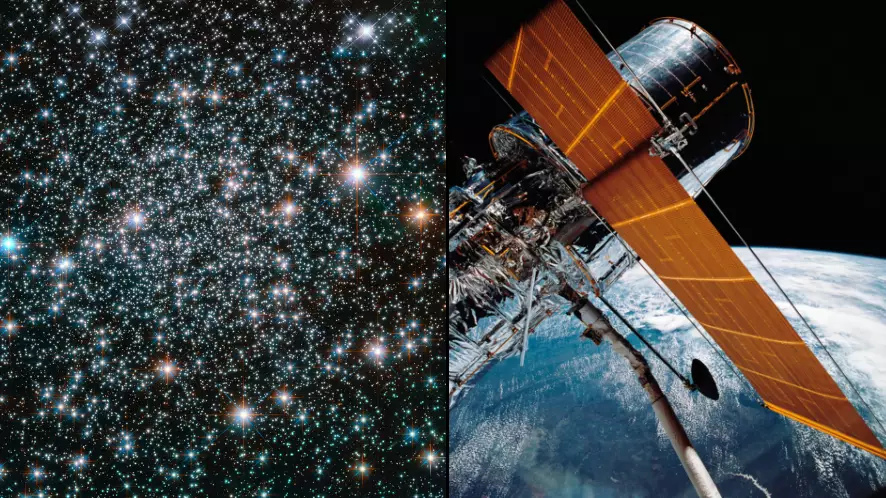
'The dawn of time' is a phrase that is thrown around a lot and let's be honest here, it was a very, very long time ago.
If you're a believer in the Big Bang Theory (about the universe not that awful TV show), then you'll know that time started around 13.8 billion years ago, or so the theory suggests.
But astronomers have, for the first time, managed to see what that looked like, kind of.
As they were looking into the universe, a galaxy helped bend light enough for them to peak around it and look deeper into the cosmos.
What they found was a quasar, which is a 'massive and extremely remote celestial object, emitting exceptionally large amounts of energy' because they could contain humungous black holes. Scientists believe that the quasar that they discovered was born directly after the Big Bang but it was about a billion years old now.
Advert
The University of Arizona's Jinyi Yang said: "This is one of the first sources to shine as the Universe emerged from the cosmic dark ages.

"Prior to this, no stars, quasars, or galaxies had been formed, until objects like this appeared like candles in the dark."
Advert
The scientists say that this quasar shines with the brightness of 600 trillion suns. I have no idea how to even comprehend something that bright.
Xiaohui Fan also from the University of Arizona, who led the study, praised the galaxy for helping them see into the universe: "If it weren't for this makeshift cosmic telescope, the quasar's light would appear about 50 times dimmer.
"This discovery demonstrates that strongly gravitationally lensed quasars do exist despite the fact that we've been looking for over 20 years and not found any others this far back in time."
Advert
"When we combined the Gemini data with observations from multiple observatories on Maunakea, the Hubble Space Telescope, and other observatories around the world, we were able to paint a complete picture of the quasar and the intervening galaxy."

That's pretty bloody epic if you ask me.
But if that doesn't tickle your space interests then you might be excited to learn that scientists have discovered a 'super-earth' that's located in a zone that could support life.
The extraordinarily large planet is 226 light-years away, in a constellation called Taurus, and experts say it's most likely either a rocky or gas-rich planet, similar to Neptune.
This new and improved Earth is situated in the stellar called K2-288, made up of a pair of dim stars, about 5.1 billion miles apart, which is approximately six times the distance between Saturn and the Sun - if that means anything to you.
According to NASA, the brighter of the two stars is about half the size of the Sun, with the second equating to just a third of the Sun.
So if you're not excited about the beginning of time or another planet potentially containing life then we just can't help you.
Featured Image Credit: PA